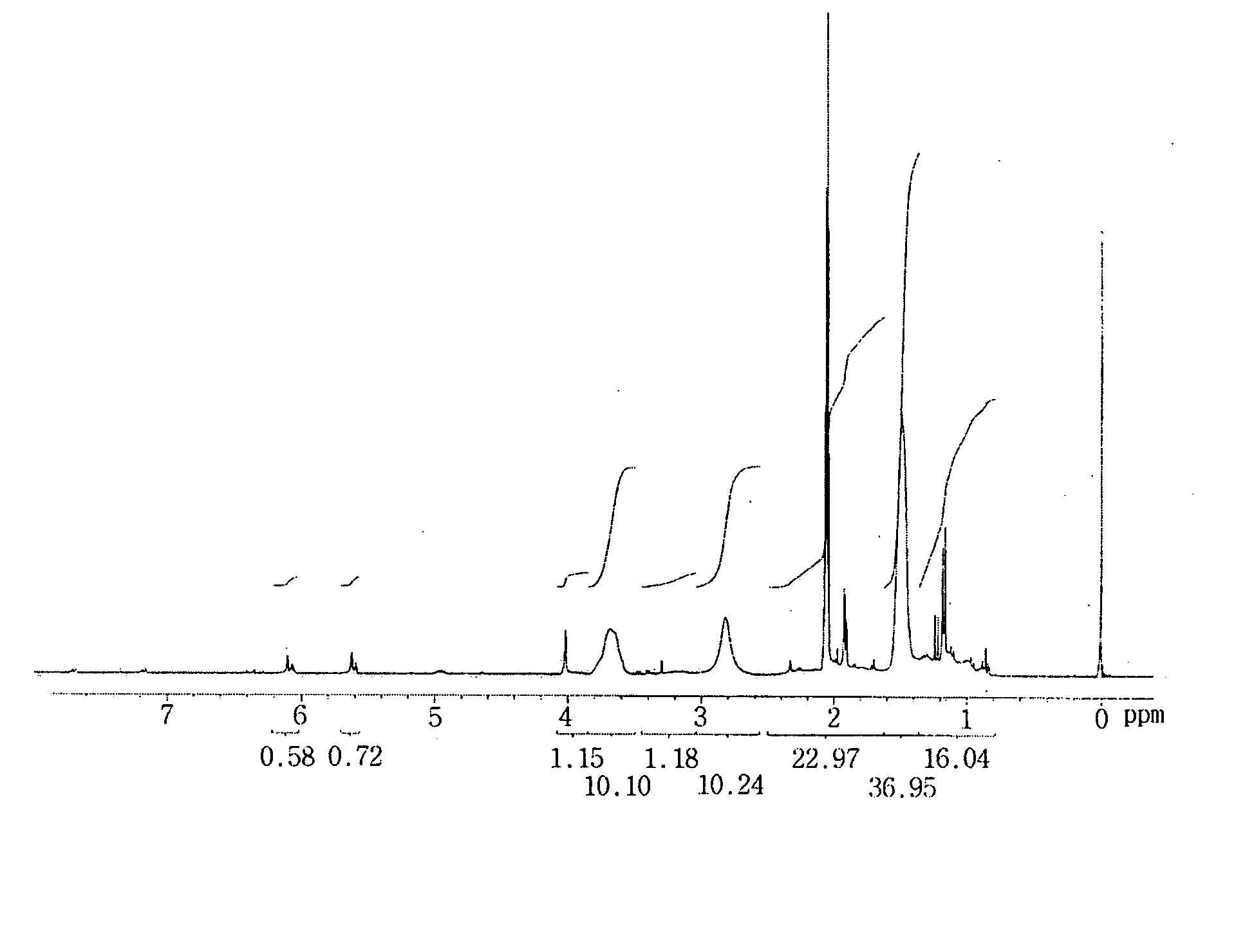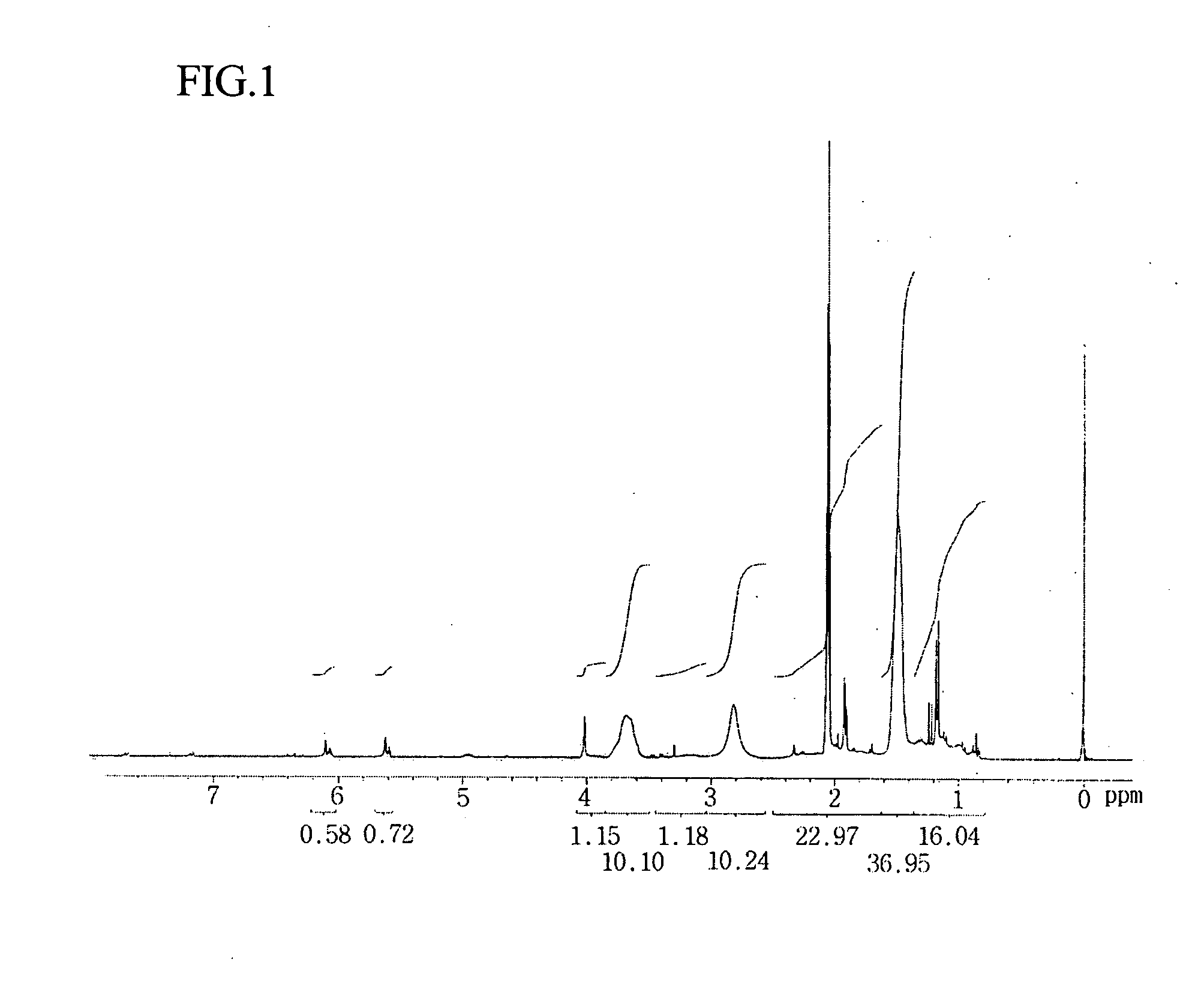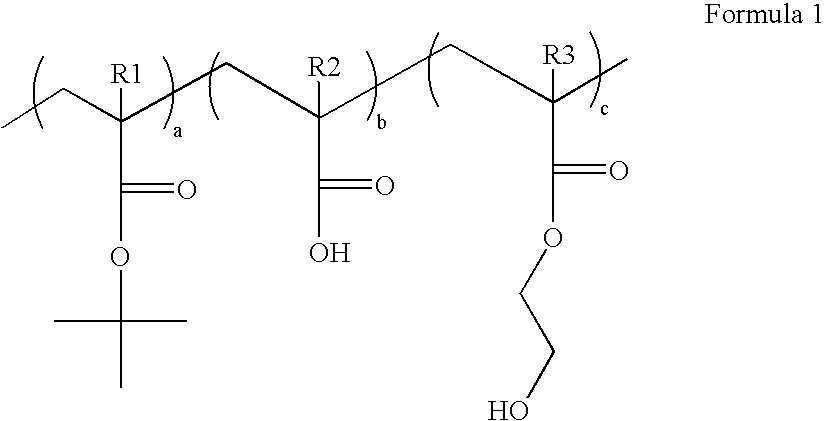Top anti-reflective coating polymer, its preparation method and top anti-reflective coating composition comprising the same
a technology of anti-reflective coating and polymer, which is applied in the direction of photosensitive materials, instruments, photomechanical equipment, etc., can solve the problems of reduced storage stability, difficult to produce on a commercial scale, and high production cost of hard pellicles
- Summary
- Abstract
- Description
- Claims
- Application Information
AI Technical Summary
Benefits of technology
Problems solved by technology
Method used
Image
Examples
example 1
Preparation of Top Anti-Reflective Coating Polymer
[0045] 12 g of t-butylacrylate, 5 g of acrylic acid, 3 g of 2-hydroxyethylmethacrylate and 0.4 g of AIBN were added to 200 g of PGMEA, and were then polymerized at 60° C. for 8 hours. After completion of the polymerization, the mixture was precipitated in ether, filtered, and dried in vacuo to yield 16 g of t-butylacrylate-acrylic acid-2-hydroxyethylmethacrylate copolymer, as a white solid, represented by Formula 2 below:
[0046] wherein a, b and c represent the mole fraction of each monomer, and are in the range between 0.05 and 0.9.
[0047] The structure of the copolymer was identified through 1H-NMR spectrum (FIG. 1).
example 2
Preparation of Top Anti-Reflective Coating Composition
[0048] 2.5 g of the polymer prepared in Example 1, and 0.04 g of L-proline, which is an amino acid, were dissolved in 100 g of n-butanol to give a top anti-reflective coating composition for use in immersion lithography.
example 3
Formation of Anti-Reflective Coating
[0049] The top anti-reflective coating composition prepared in Example 2 was coated on a wafer at 2,000 rpm to form an anti-reflective coating. The thickness, light transmission (at 193 nm), and reflective index of the anti-reflective coating were shown to have 47 nm, 93%, and 1.60, respectively.
PUM
| Property | Measurement | Unit |
|---|---|---|
| Temperature | aaaaa | aaaaa |
| Temperature | aaaaa | aaaaa |
| Temperature | aaaaa | aaaaa |
Abstract
Description
Claims
Application Information
 Login to View More
Login to View More - R&D
- Intellectual Property
- Life Sciences
- Materials
- Tech Scout
- Unparalleled Data Quality
- Higher Quality Content
- 60% Fewer Hallucinations
Browse by: Latest US Patents, China's latest patents, Technical Efficacy Thesaurus, Application Domain, Technology Topic, Popular Technical Reports.
© 2025 PatSnap. All rights reserved.Legal|Privacy policy|Modern Slavery Act Transparency Statement|Sitemap|About US| Contact US: help@patsnap.com



